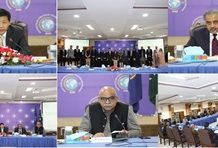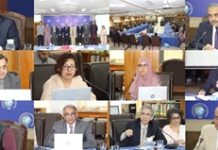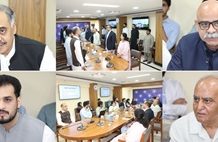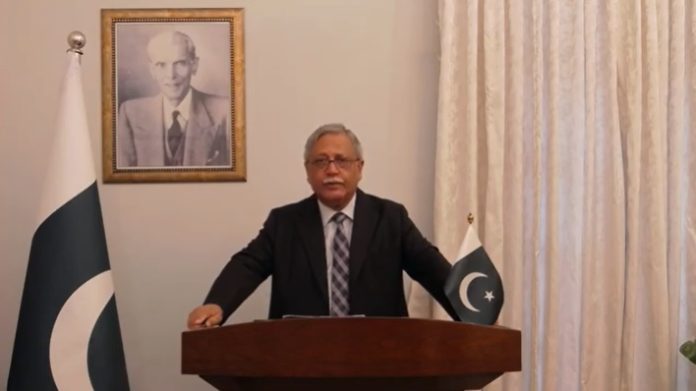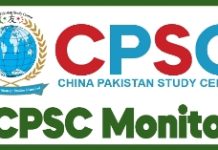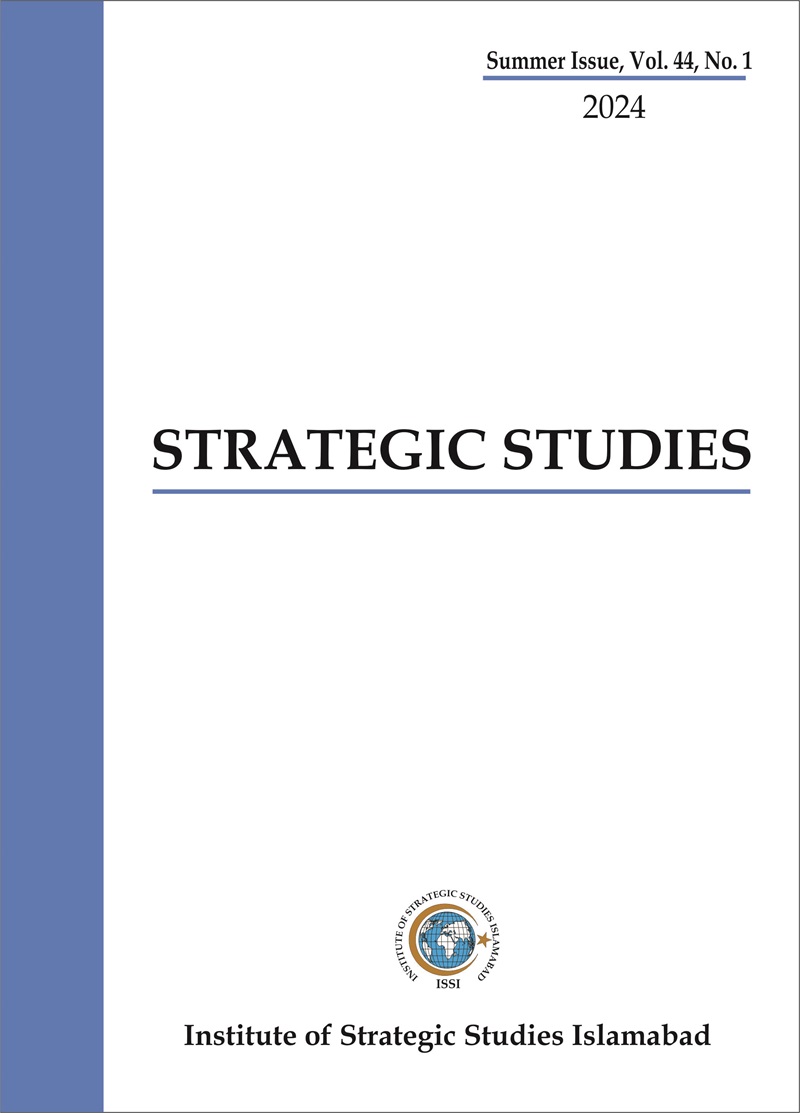AD NCA
Message for ACDC/ISSI Seminar – 24 May 2023
25 years of Yom Takbeer: Promoting Peace, Stability and Development
Ambassador Khalid Mahmood, Chairman Board of Governors Institute of Strategic Studies Islamabad (ISSI), Ambassador Sohail Mahmood, Director General Institute of Strategic Studies Islamabad, Mr Malik Qasim Mustafa Director Arms Control and Disarmament Centre (ACDC) at ISSI, distinguished speakers, ladies and gentlemen, Assalam Alaikum.
I am greatly honoured to have been asked by the Arms Control and Disarmament Centre of ISSI to send a message on the occasion of this important Seminar to celebrate the 25th anniversary of Yom-Takbeer. Having had the privilege of deep association with Pakistan’s nuclear programme from the post-Yom Takbeer period onwards, stretching now to 25 years in itself, I shall be very happy indeed to share my thoughts on the topic that has been very well chosen to comprehensively cover all aspects of Pakistan’s nuclear programme and the effects that it generates in promoting peace and stability in South Asia and development inside Pakistan.
In Pakistan’s national calendar of important events that we celebrate, 28th May and 30th May 1998 are two dates in Pakistan’s history that have come to occupy a special place of pride as well as dates that represent national strength, national resolve and national will to protect Pakistan. These sentiments run across the social fabric and political spectrum of Pakistan irrespective; the people and the streets of Pakistan own and support the nuclear programme. The slightest hint of danger to Pakistan’s nuclear capability arouses suspicions and the people of Pakistan make it a point to make it clear that no compromises on this account will ever be acceptable.
Pakistan’s historic decision to respond to India’s five nuclear tests of 11th and 13th May 1998 with six nuclear tests of our own, was the culmination of a comprehensive national political, scientific, strategic and diplomatic effort going back to 1972 to preserve Pakistan’s national security at all cost against external aggression.
As is well known, the two events that became catalysts in forcing Pakistan’s hand to choose the path of developing nuclear weapons in search of everlasting security were the humiliation of the 1971 War followed by India’s testing of a nuclear device at Pokhran in May 1974. The serious strategic consequences of both these events exposed the vulnerability of Pakistan’s security against an adversary that not only traditionally enjoyed the advantages of relative asymmetry in conventional forces but had also demonstrated its military capability in no uncertain terms. Its political will and intention to employ that capability in the ruthless pursuit of its political objectives were made quite clear to Pakistan on both occasions.
All credit and everlasting national gratitude therefore to Pakistan’s national leadership of the time for responding by doing the right thing by Pakistan and taking the right decision at the right time in the interest of Pakistan’s security by proceeding on the nuclear weapons route – and mind you against the greatest of odds. Any decision other than this would have been a strategic disaster, and serious dereliction of responsibility.
Today, as we celebrate 25 years of Yom Takbeer, we must begin by first of all paying tribute to the founding fathers of Pakistan’s nuclear programme in the political, scientific, strategic and diplomatic fields and salute those whose collective determination, political wisdom and vision, and scientific expertise allows Pakistanis today to live and breathe in an environment of relative peace and stability without fear of external aggression or a repeat of 1971.
Pakistan’s nuclear project can be neatly divided into two clear eras. One, the period from 1972 to May 1998 spanning 26 years, which saw the right political decisions being taken across a unified political spectrum irrespective of the personalities or governments in power, breathtaking scientific milestones and breakthroughs being achieved, and superlative diplomacy at its best in providing a diplomatic cover and shielding the national nuclear effort from external harm.
Allah was clearly on our side when He provided breathing space to Pakistan’s nuclear programme for nearly a decade when the USSR invaded Afghanistan in 1979, and the international focus on Pakistan’s nuclear project was pushed into the background. This first era of 26 years enabled Pakistan to excel and move rapidly up a number of scientific notches from level zero to a point when in two weeks’ time after the Indian tests, Pakistan’s scientific community demonstrated its sound professional capabilities by celebrating success on 28th and 30th May 1998 in style. The world – and India – were stunned. Pakistan had balanced out the strategic equation for all times to come and from a strategic viewpoint, India’s advantage of relative conventional asymmetry and its strategies to employ the military instrument in support of its political objectives stood compromised. India has not been able to recover ever since from the restoration of strategic balance in South Asia.
While there is a vast number of silent soldiers and heroes of Pakistan’s strategic scientific community who contributed in fortifying Pakistan’s national security, some names from amongst the leaders must be taken to acknowledge their devotion and single minded effort in leading their super teams to success. Professor Abdus Salam, Dr I H Usmani, Mr Munir Ahmed Khan, Dr Ishfaq Ahmed, Professor Dr Riazuddin, Dr Samar Mubarakmand, Mr Pervez Butt, Mr Anwar Ali, Mr Irfan Burney, Dr Ansar Pervez, Mr Naeem Ahmed, Dr Ghulam Nabi from the Pakistan Atomic Energy Commission (PAEC). The one and only Dr Abdul Qadeer Khan from the Dr A Q Khan Research Laboratories (KRL) along with his superb team which comprised of Dr Fakhar Hashmi, Dr Javed Mirza, Dr Naseem Ahmed, Mr Kareem Ahmed, Dr Ejaz Mukhtar, Dr Wilayat Hussain, and a host of others. These ladies and gentlemen are some of Pakistan’s genuine heroes to whom we owe our deepest gratitude and respects for making Pakistan secure from external aggression.
The second nuclear era of Pakistan’s nuclear project commenced from the post-May 1998 tests period and can be counted till as of today spanning the next 25 years. The threads of the nuclear project were picked up from the end of the first era when the scientists proved Pakistan’s nuclear capability through nuclear tests. The work in this second era was carried forward through the stages of conceiving, developing, and securing Pakistan’s nuclear capability by converting it into a robust comprehensive operationalized capability based on a variety of nuclear weapons. As a consequence, Pakistan’s nuclear deterrence capabilities today are based on a well-balanced triad of strategic forces based on land, air and sea based capabilities which deter aggression comprehensively. These operate under the umbrella of a strong command and control system under the National Command Authority (NCA) and the Strategic Plans Division (SPD) and are articulated through the policy of Full Spectrum Deterrence.
Taking advantage of this occasion, for better understanding, I will briefly dwell upon the articulation and implications of Pakistan’s policy of Full Spectrum Deterrence and how it keeps India’s aggressive designs including the Indian military’s Cold Start Doctrine in check thereby contributing directly to the enforcement of peace, howsoever fragile it might seem, and retention of strategic stability in South Asia.
Pakistan’s Full Spectrum Deterrence capability, while remaining within the larger philosophy of Credible Minimum Deterrence, comprises horizontally of a robust tri-services inventory of a variety of nuclear weapons, a triad if you may. It is held on land with the Army Strategic Force Command (ASFC), at sea with the Naval Strategic Force Command (NSFC), and in the air with the Air Force Strategic Command (AFSC). Vertically the spectrum encapsulates adequate range coverage from 0 meters to 2750 kms, as well as nuclear weapons destructive yields at three tiers: strategic, operational and tactical. India’s vast eastern and southern geographical dimensions are therefore entirely covered.
Specifically, the articulation of Full Spectrum Deterrence implies the following:
- That Pakistan possesses the full spectrum of nuclear weapons in three categories: strategic, operational and tactical, with full range coverage of the large Indian land mass and its outlying territories; there is no place for India’s strategic weapons to hide.
- That Pakistan possesses an entire range of weapons yield coverage in terms of kilotons (KT), and the numbers strongly secured, to deter the adversary’s declared policy of massive retaliation; Pakistan’s ‘counter-massive retaliation’ can therefore be as severe if not more.
- That Pakistan retains the liberty of choosing from a full spectrum of targets in a “target-rich India”, notwithstanding the indigenous Indian BMD or the Russian S-400, to include counter value, counter force and battlefield targets.
With the foregoing explanation, it would be quite clear that the second era comprising of the last 25 years of Pakistan’s nuclear capability should be seen as the seamless continuation of Pakistan’s strategic journey that began with the first era of 26 years. Chronologically speaking therefore, the two neat time compartments, while being complimentary to each other would be: First era from 1972 to May 1998, and the second era from May 1998 to May 2023. The journey carries on nevertheless in pursuit of scientific and strategic excellence seeking qualitative improvements but clearly shying away from a mindless and quite unnecessary nuclear arms race.
In the future too Pakistan’s Full Spectrum Deterrence capability will continue to ensure that peace and strategic stability in South Asia will prevail and that instability will not be allowed to be introduced. If I may say, the illogical logic of Mutually Assured Destruction (MAD) will remain as relevant in South Asia as it does in Europe and across the Atlantic.
Before I conclude I shall briefly touch upon the aspects of the use of Pakistan’s nuclear capabilities in pursuit of civil applications for development. I am sure that Dr Ansar Pervez will have much more to say in his presentation later today. Pakistan’s crowning success in this regard has been in the field of nuclear energy wherein in pursuit of the NCA approved Nuclear Energy Vision-2050, Pakistani scientists and engineers have delivered seven nuclear power plants which include KANUPP-1 of 120 MWs, Chasma-1, Chashma-2, Chashma-3 and Chashma-4 of 325 MWs each, and KANUPP-2 and KANUPP-3 of 1100 MWs each. If only governments would be more supportive, the Nuclear Energy Vision-2050 plans to deliver 42000 MWs of electricity by 2050; and for an academic comparison this is roughly the equivalent of ten Kalabagh Dams.
Additionally, the nuclear sector has also contributed immensely in running 19 cancer treatment hospitals across all provinces, and nuclear agriculture research centres. PAEC also runs a first rate degree awarding university the Pakistan Institute of Engineering and Applied Sciences (PIEAS) in order for Pakistani students to undertake under grad, masters and Ph D programmes in sensitive disciplines which otherwise would be denied to them internationally.
To conclude, ladies and gentlemen, Pakistan’s nuclear project has delivered in all areas of national endeavor especially so in making Pakistan secure from external aggression. The deterrence effects generated by Pakistan’s strategic programme have provided Pakistan with a strategic shield for times to come and has rendered India’s advantages of relative conventional asymmetry near-irrelevant. And for this no amount of homage that we can pay to all our national heroes who made this possible would be enough. Yom Takbeer must continue to be celebrated with humility and gratitude to Allah for making Pakistan safe and secure.
I wish ACDC, ISSI and all the participants a very successful Seminar.





